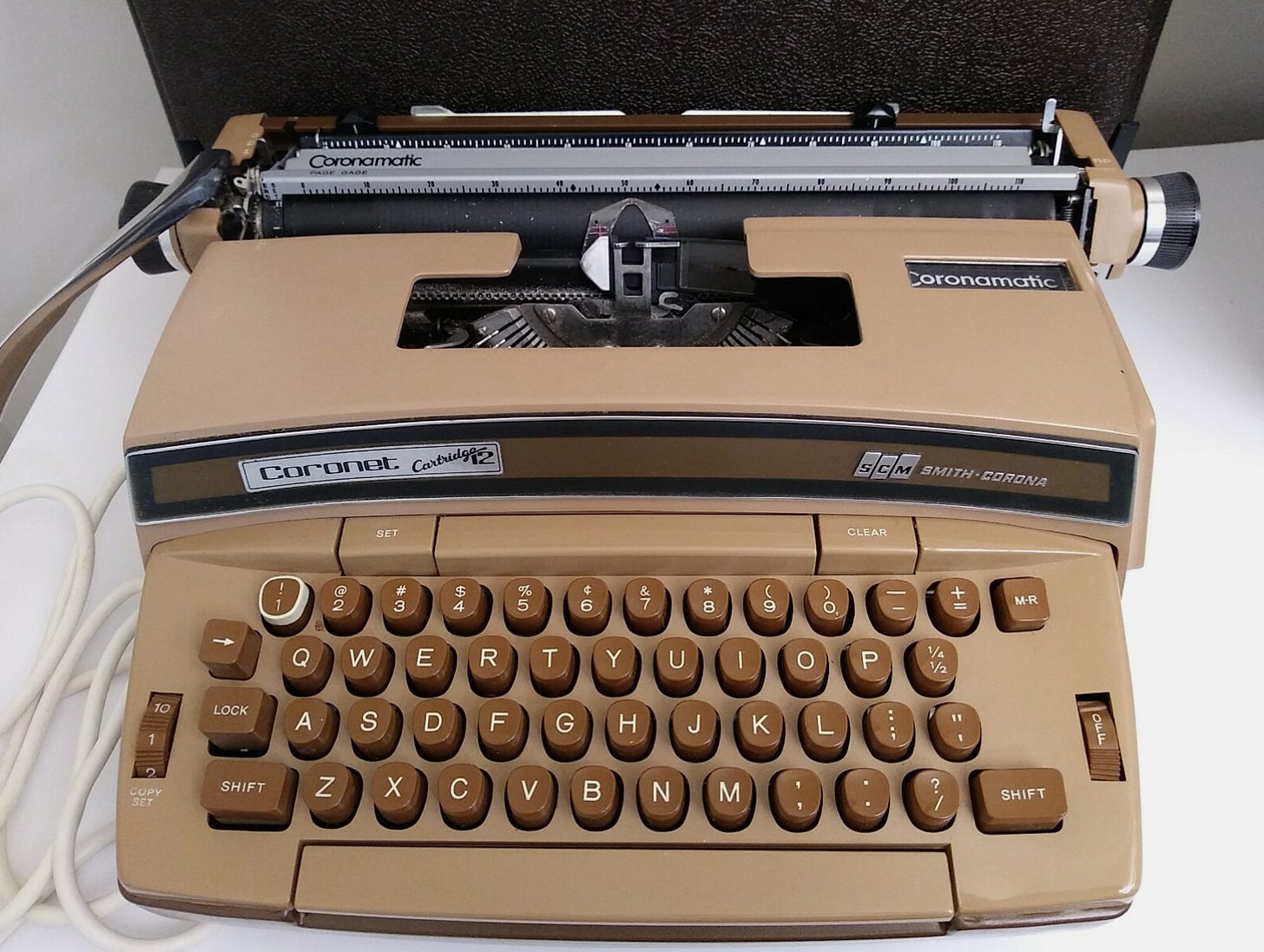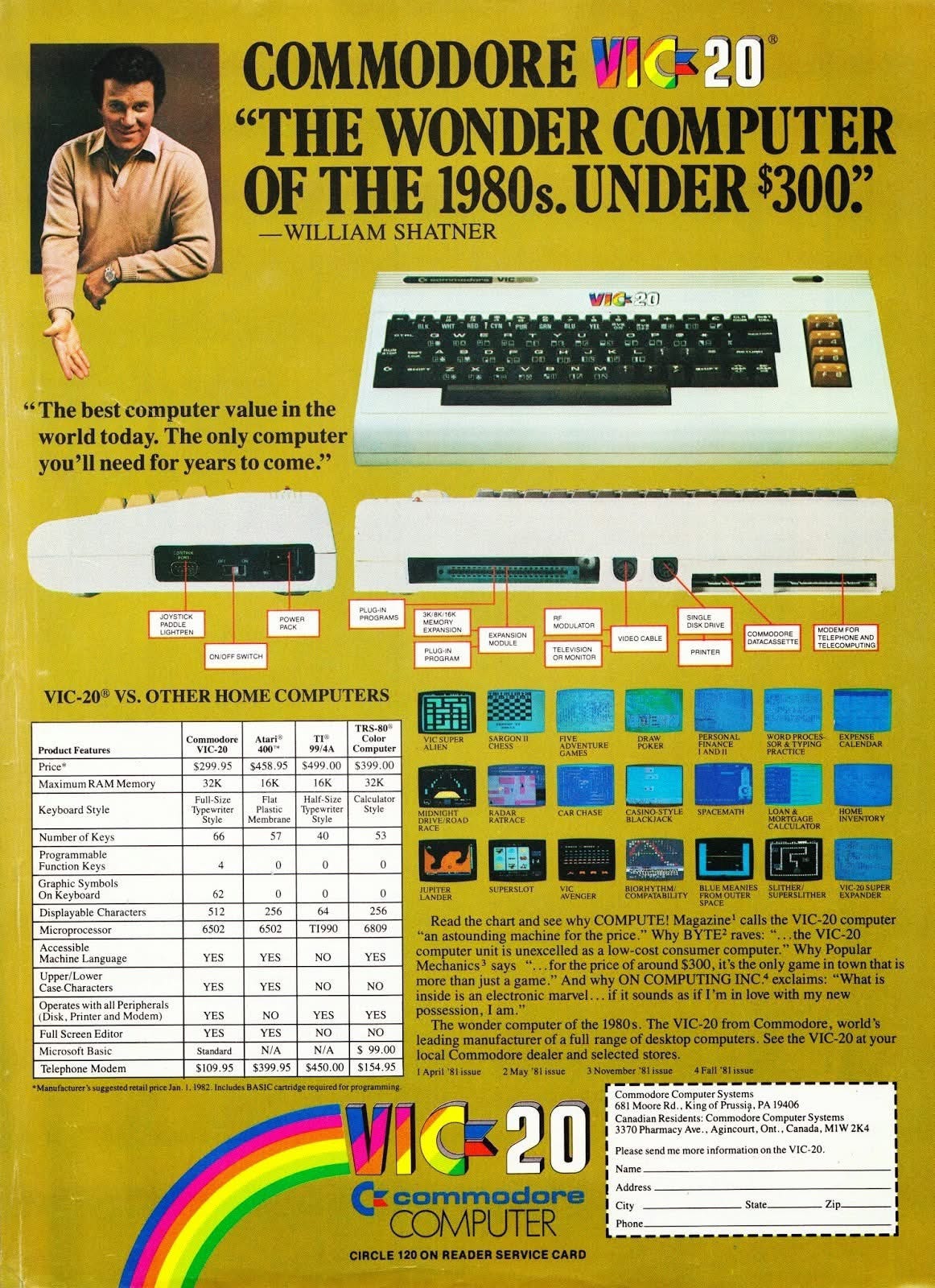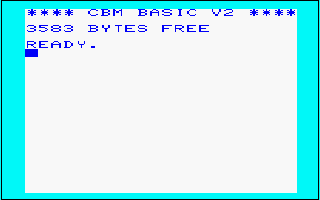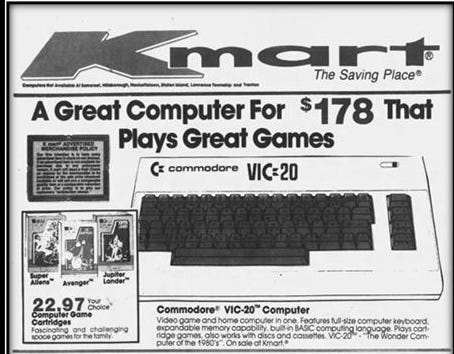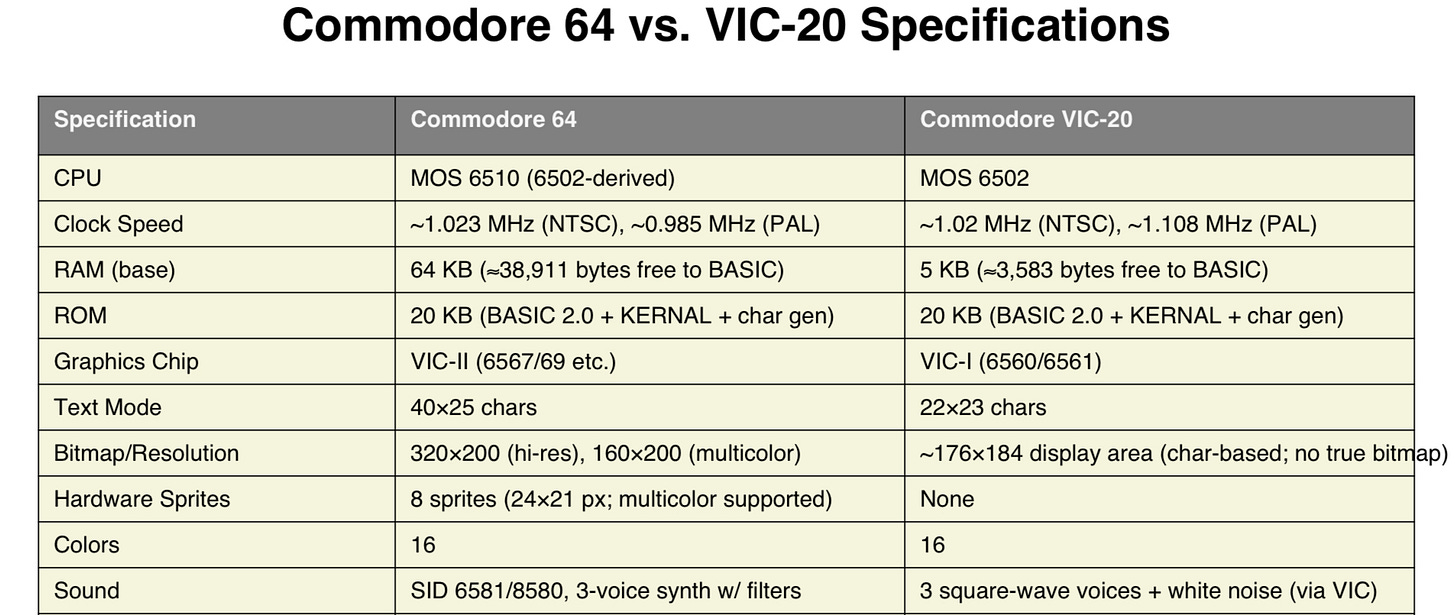Computer of the Week!
One week. That’s how long I owned my first computer…
In my lifetime, I’ve owned more computers, programmable calculators, tablets, smartphones, and other electronic devices than I can remember. But I’ll always remember my first personal computer, mainly because I only owned it for a week.
It was the spring of 1983, and my wife of three years and I were living in a small ranch style house in Aurora, Colorado. Although I knew about personal computers from friends and co-workers who owned them, I thought that they were overpriced. For example, an Apple II with 48K of RAM and a single 5-1/4” floppy drive was priced at $2,175. I wouldn’t hesitate to buy a computer nowadays for that price, as it would have some pretty good specifications. But that $2,175 is equivalent to $7,303 in 2025, and there is no way I’d spend that much on a computer! I was just five years into my career in 1983 and wasn’t making the big bucks.
There was also the question of a “use case” for a personal computer (to this day, I still find myself needing to justify any frivolous purchases like the Raspberry Pi 500 I’m about to blow money on). My spouse and I were both finishing up a Master’s degree program at that time, and one of our fellow students had an Apple II that he used with a word processing program to write his papers. Well, after trying his Apple II I found that I could pound out my homework much faster on my trusty Smith Corona Coronet electric typewriter with its cool ribbon cartridges (it looked exactly like the image below)! My output also looked better, since he was printing out his papers on a lousy dot matrix printer.
Spreadsheets? VisiCalc was the “killer app” for the Apple II, but at the time I really couldn’t see a need for something that crunched numbers and put them in a nice table. Database programs? Now there was something I could get my mind around. I like to organize things, and my thinking back then is that spouse and I could do an up-to-date inventory of items for insurance purposes, or maybe catalog our growing collections of vinyl record albums and VHS videotapes.
Programming? Yeah, I liked doing that. Games? I wasn’t much of a gamer, although we owned an Atari 2600 and a number of cartridges. Home automation? It was the thing of dreams in 1983, although a friend of mine that you’ll read about in many of these posts — Rick B. (last name redacted in respect of his passing) — and his father had done some pioneering work in this area.
The thoughts of doing some programming, perhaps writing (hmmm… a foreshadowing of a future career path for me), and organizing my OCD life with a database manager started to obsess me a little bit. Of course, I had also heard about the new world of bulletin board systems and online information sources. But the price tag of a computer just didn’t seem to be worth it to me.
Then came the day that I became aware of the Commodore VIC-20. I’m not sure, but it could have been Captain Kirk beckoning me on a voyage to seek out new expensive hobbies:
OK, so it was a “home computer” and not a “real” business computer. But heck, $299.95? Much less than that Apple II, and you could get a word processor, a home inventory program, and even a biorhythm program for it (remember that pseudoscientific nonsense?). WOW!
One day in (I think) March or April of ‘83 I happened upon a Kmart ad that had the VIC-20 listed on sale for $249. OMG! For that price, I knew I could afford a few of the peripherals I’d need to get in addition to the computer. First, and most important, was the cassette tape drive (the Commodore Datasette 1530) that was selling for $79. Next — because there was no way I was going to hook this up to our one and only color TV set in the living room — I needed a monitor. I wanted something that was color and that might work with whatever computer I knew I would upgrade to in the future.
A local computer store had just what I wanted — the Amdek Color 1 monitor. Oddly enough, it was more expensive than the VIC-20 at (I think) $329. But I figured I was going to have it for a while… Here’s an ad that showed it with the popular computers of 1982 — the VIC-20, the Atari 400/800, and the Apple II:
Image via Vintage Computing and Gaming.
Something kept me from buying the Commodore Automodem 1650 while I was spending all of this money. I did see one at Kmart when I picked up my VIC-20 and Datasette 1530, but it would have to wait.
Since my wife and I were both working and in grad school at the time, we had desks in a spare bedroom and that’s where I set up the VIC-20. I recall connecting it to the monitor with the included Commodore A/V cable (no need for an RF modulator box, since I wasn’t connecting it to a TV). I plugged in the tape drive, opened the manual, and hit the power switch on the right side of the computer… and was greeted by something that looked like this:
Now, the VIC-20 had a user manual that was aimed at those who had absolutely no background in computers… which was most people at that point in time. I have to admit after looking at this scanned manual that it was actually quite well done in that respect. I’ve written user manuals for software, and found it’s always best to assume that your reader has no idea of what they’re doing, so you explain things in very simple language. This is written so that a kid (probably the target market) could use it.
Seriously, if you haven’t clicked that link for the manual yet, do so now. This book took you through everything, including some cursory BASIC programming. If anything, it was preparing the VIC-20 user for hours of typing in BASIC programs from magazines. All through the manual, your journey was accompanied by that VIC-20 with a face, arms and hands, and legs. Frightening stuff…
It took me less than a week to run through all of the example programs in the manual and I even wrote a few programs myself to practice what I had learned. I learned just how slow the Datasette 1530 was, and how to use it to store programs and retrieve them.
At that point, I saw another Kmart VIC-20 ad:
That really ticked me off! I had spent $249 just a week before, and here it was available for $178? Well, there was something else that caught my eye a day later; a flyer for the same Kmart store at 4298 South Parker Road with the Commodore 64 for $249! What the heck?
I had a plan… I put the VIC-20 back in the box, grabbed my receipt, and headed down to the store, which was only about 10 minutes from our house. I walked in and said that I wasn’t happy with my purchase and wanted a full refund. The cashier looked at the receipt, then said “I can’t refund that amount; the price is now lower” so I demanded to see the manager. I explained to the manager that the computer wasn’t going to fit my needs and that I had just bought it for $249, and by gosh, I wanted my money back (insert scowling 25-year-old face here). He told the cashier to refund the full $249.
Now, I didn’t have the courage to actually buy the C-64 at that store since my demanding a full refund was borderline unethical. Another local Kmart had the same price so I scooted over there and bought the discounted computer. In an instant, I had upped the specs of my home computer significantly:
I was set! I’d keep that Commodore 64 for about a year, when it would be replaced by first a Sanyo MBC-555 PC compatible, and then a Mac 512K. More on all of these computers in future posts here on LifeBits!
Did you enjoy this little bit of personal computing history? If you did, would you consider doing something?
First, if you’re not already a subscriber, please hit the subscribe button below. You can subscribe for free and LifeBits will show up in your email inbox whenever a new article is published. You can also consider a paid subscription for $5 a month (less for an annual subscription!), which will provide a lot of fun benefits down the road and also support some upcoming projects I have in mind.
Please consider sharing this article with others who enjoy retro computing and tech history.
Until next time… don’t type NEW at the prompt on your VIC-20 unless you really mean to erase that program in memory!



